Highlight The 2 cathedrals.
It was a lazy start to the day and then we headed north to Cheltenham
to see the houses, see the pump rooms, do some banking and have a coffee. For
us it was three out of four is not bad.
With Cheltenham being a smaller town we had no problem
getting a road side park near Montpellier gardens. We walked towards the centre
of town, admiring the Regency Houses on the way. We did the banking then sat
over hot chocolates to plot a cache to find as a memory.
We found there was cache in honour of Edward Jenner in a
small garden named for him. The listing pointed out that Jenner Gardens is a little-known gem of tranquillity in
the heart of Cheltenham. Having seen his statue in Gloucester Cathedral
we headed for this instead of the pump rooms.
Edward
Jenner was born in Berkeley, Gloucestershire in 1749. He studied medicine and worked
first in London. He moved his practise to the area when his wife’s health
improved by taking the waters.
In 1798 he published his book that described how smallpox could be prevented by vaccination with cow pox. Vaccination was actively supported by many of the influential people who visited Cheltenham, then in its heyday as a spa town. Jenner himself worked tirelessly to see the scourge of smallpox eradicated. Although awarded many honours, he never became a rich man. He devoted so much time to vaccination that his business as a country doctor suffered. He would often vaccinate poor people free of charge.
In 1980 the World health Organisation announced that smallpox had been eradicated from the face of the earth. Jenner's discovery had saved hundreds of millions of lives and laid the foundation for the science of Immunology.
Sadly, this first sign we saw in the gardens
described his work was graffitied so it was lucky the listing told us what the
sign indicated, although in less detail, as only the sign made the link to
milkmaids that we already knew. (The milkmaids picked up cowpox which made them
immune to the more deadly smallpox).The gardens were an old cemetery that
operated from 1810 to 1889, and were rather overgrown.
We spotted the cache but were aware of 2
people on a nearby seat. When one left and the other was on his phone we made a
quick grab to sign and return the cache.
We then started talking to the interesting man
(Sean) who had stayed on the seat. He works from home for a company in
Australia and so works by night and is free by day, and often comes here. Sean was
both puzzled and disappointed that the usual daffodils were not on display for
us to admire.
He had a ‘picker upper’ given to him by the council because he
often cleans the park when visiting, including having to remove syringes. He
pointed out that by the only 2 entrances/exits were rubbish bins so people had
not excuse to litter.
He was passionate about the work of Jenner as
well. He believed he should be posthumously knighted for his work and made a
good case for it. His final comment here was ‘if people get knighted for riding
cycles in circles, he should not be overlooked’.
He asked about our GPS and we told him how we
knew of the park through geocaching. He was pleased to know why people wearing
such items often looked lost and wander around but don’t need help when he has
asked. He may try the game but was probably just polite.
Once back at the car we headed for Coventry. Both
of the map routes to our overnight stop went through there and it was an easy
decision. It was far less easy to find a park, and we explored more of the town
centre than we wanted to trying to find an open car park. The first had the P
sign but was closed as was the second. We stopped, plotted and headed for the
Park and Ride at the War Memorial park, which should have been our first choice
really.
By the time we got to the cathedrals we were
hungry, so our first stop was actually the café. We were pleased with our
choice as it was called Rising, themed with the 40’s and run by Betel UK, a charity
raising money to support addicts. I had the Clark Gable salad and John the Farmer’s
Special (a ploughmana).
We could see why the café is highly recommended.
We then went to look around the new cathedral,
designed by Basil Spence. We did it in an odd order because we started from the
café. So the first thing we saw was the Charred Cross. When the original cathedral
was bombed by the Luftwaffe, 2 medieval beams fell in the shape of a cross. The
groundsman bound them together and set them up and they were moved here in
1978. The theme of the cathedral is reconciliation and three medieval nails
form the cross of peace and reconciliation.
Next we saw the largest tapestry in the
world, woven in France and filling the wall of the Lady Chapel. The high altar
has the original cross of nails from 1940 and a silver cross reminiscent of the
charred cross. Much of the other artwork in the cathedral has been donated by
other churches from such places as the USA and Germany.
The Baptistery window is stunning, full of
colour, as modern stained glass often is. The designer said it was a burst of glory.
Basil Spencer said it was just right.
The nearby font is unusual as it is a boulder
from a hillside near Bethlehem.
Our visit was made special by the music that
followed us around. BBC2 were rehearsing and we had orchestral music, choral
music a soloist and someone doing readings. We never did find out what it was about,
but it made a great backdrop. I had tried to take a photo of the tapestry, but
the best one was taken from the far end of the cathedral with the rehearsing players
in the front.
When we later walked around the outside of
the cathedral, we found it was stark from the outside and a couple of walls
seemed ‘boring’ to my unartistic eye. It was certainly designed to be viewed from
inside.
We went to the ruins of the original cathedral.
From inside we could see the tower still standing (we were too late to do the
walk up) and the nearby spire of the Holy Trinity Church. It is amazing that
one was destroyed and the other still stands, yet they are only metres apart.
We did read the strengthening of the cathedral with steel prior to the bombing
actually contributed to its destruction.
The severe heat caused the metal beams
to buckle, crumbling the outside walls. There was a special plaque here to
honour the work of the Home Guard as well as a Reconciliation Statue and other
modern works. However, it was the standing walls with the empty spaces and the
open sky that was most moving.
It was also very moving to read how a group
of German Parishioners after the war volunteered to work on the new cathedral.
As a result, a group from Coventry went to Dresden to rebuild the hospital
destroyed by Allied bombing.
When we waited for the bus back to our car we
started talking with another John. After he stopped being cross about the late
arrival of the bus he told us several snippets about the history of the city.
One part I recall is about the city wall, which previously had 13 gates in it.
As it was used to block Edward II ((corrected from Charles) nentering the city, Henry VIII demanded it be
dismantled when he came to power. John also said the early residents had upset
the authorities by using the top of the wall for allotments.
Our overnight stay had been booked at a
rather random place, The Redwings Lodge, Rutlands, which was really on a large
layby off the main road but in the middle of the English countyside. The drive
was very picturesque, with lots of narrow, hedged roads and open fields. It was
fine for a night (a bit musty but clean and comfortable) and the centre of lots
of walks. We chose it because it was in the country between Gloucester and
Kings Lynn!! We drove out to find a light evening meal but instead found a
couple of caches, one of which was part of what would be a great walk if we had
time. We then had our light meal at the café next to the place we were staying.
It was great and if we had been hungry the pizzas would have been top of our list.

 Morcott, England, United Kingdom
Morcott, England, United Kingdom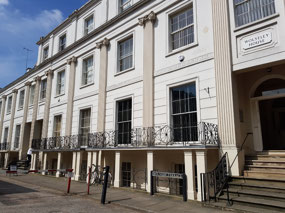
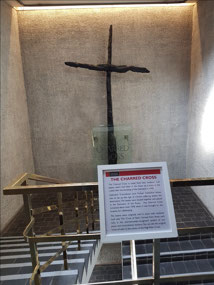
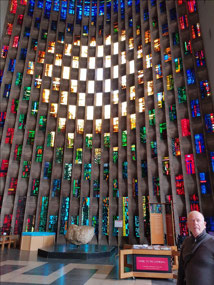
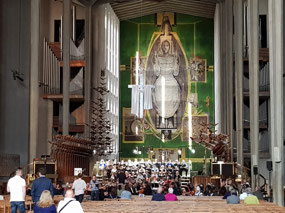
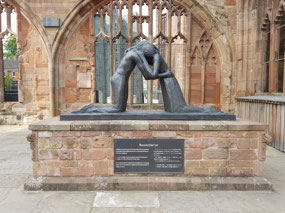
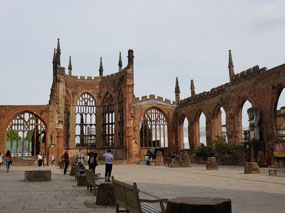
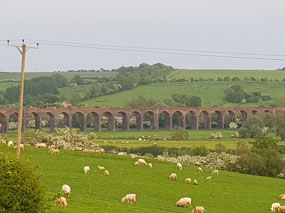





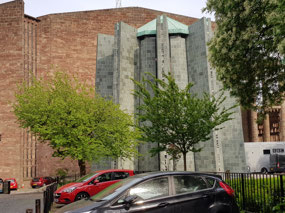
Jennifer
2018-05-24
Misinformation re Henry and Charles as the Stuarts came after the Tudors.
baumyj
2018-05-24
Oops - I think he said Edward so will correct.